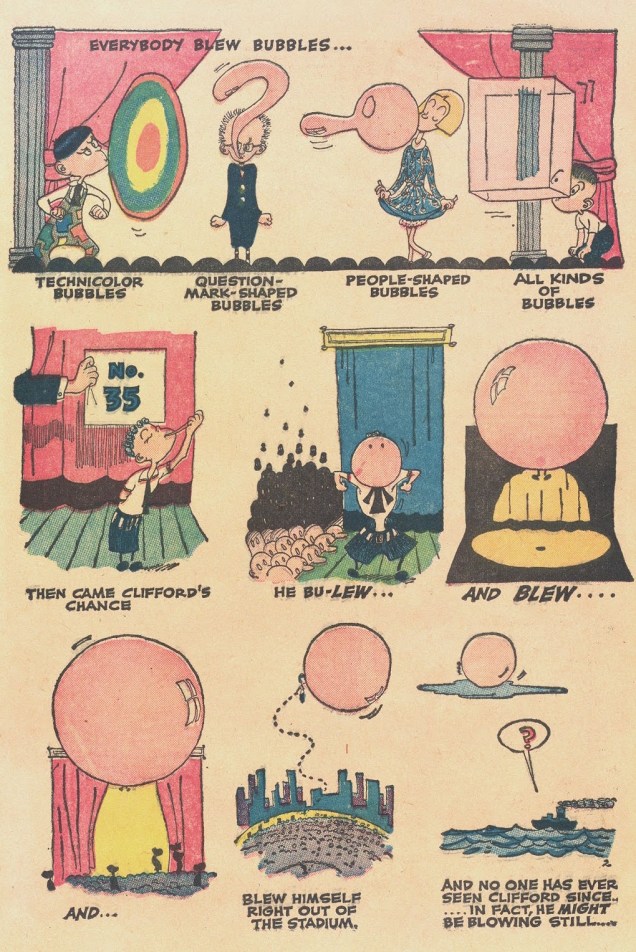It’s Jules Feiffer’s birthday! Break out the bubbly (not the cheap stuff)!*
Born on January 26th, 1929, today he turns a respectable 89. He’s still releasing new books, so let’s wish him many more happy and productive years.
If a book with no pictures has no use (according to Lewis Carroll’s Alice), I figure a blog post with no pictures is equally devoid of purpose, so here’s a few fun Feiffer bagatelles.

“Explainers: The Complete Village Voice Strips” was supposed to collect everything in four handy volumes, but unfortunately so far there’s only been one (published in 2008) and no mention of others to come. Still, it’s well worth seeking out. Check out an excellent review of it here, tempting you to it with this pithy quote:
« Explainers is a ‘dipping book’. It’s not something to storm your way through but something to return to over and again. Feiffer’s thoughts and language, his observations and questions are fearsomely eternal. Best of all, Feiffer’s expressive drawing is a masterclass in style and economy all by itself. »
In his earlier years, Feiffer’s excitable, skittish pen was a little more subdued. Case in point: Clifford, Feiffer’s first published strip.


Clifford first appeared in Kewpies #1 (spring 1949), published by Will Eisner, when Feiffer was but 20. In « Out of Line : the Art of Jules Feiffer » (2015), Martha Fay explains that Feiffer had the style of Walt Kelly’s Pogo in mind when he created Clifford.


Nowadays, Feiffer is writing and illustrating children’s books. In an interview with Gary Groth, he explained that « They represent the gentler, sweeter world that, as we grow older, we go about corrupting first chance we get. No, that’s too cynical. Second and third chance we get. » They may be intended for children, but they are, for the most part, every bit as clever and multi-layered as the Feiffer-for-adults.

What kind of plot would a Feiffer-book-for-children have, you ask?
« Prince Roger sets out eagerly on a quest and finds a few adventures, a lot of friends, a damsel or two in distress (not!) and himself, in the end. A ‘carrier of joy’ whose mere presence causes everyone to laugh uncontrollably, Roger finds cruelty and kindness equally amusing, and expects his quest to be a lark. It’s anything but: As Roger passes through the Forever Forest, nearly starves at the Dastardly Divide, sees people at their worst in the Valley of Vengeance, and temporarily despairs in the Mountains of Malice, he sobers up, learns to care for others, becomes an expert peacemaker, does Good Deeds, and falls in love with Lady Sadie, who says what she thinks as she repeatedly saves his bacon. »
Read an excellent (though 10 year-old) article from New York Times about Feiffer here.
~ ds / RG
*A triumphant return to the home town
Treated with love and respect
A special school assembly
Before they would have broken my neck
My favourite colour
An E-type Jag
Roll out the red carpet
A glass of champagne – Not the cheap stuff!
(Black Box Recorder, « Being Number One »)
5 thoughts on “Jules Feiffer’s Triumph”